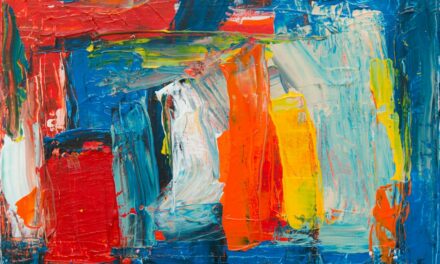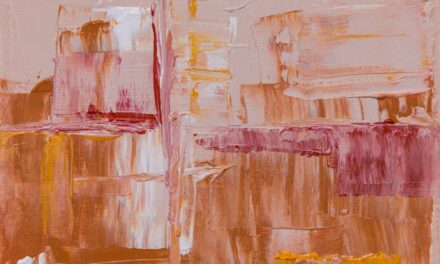Sculpture, as a three-dimensional art form, has captivated humanity for millennia. It transcends mere representation, allowing artists to explore the interplay of form, space, and texture. From the ancient stone carvings of Mesopotamia to the contemporary installations of modern artists, sculpture serves as a powerful medium for expression and communication.
Unlike painting or drawing, which are confined to two dimensions, sculpture invites viewers to engage with art in a more tactile and immersive manner. This unique quality enables sculptors to convey complex narratives and emotions through the manipulation of materials and forms. The history of sculpture is rich and varied, reflecting the cultural and social contexts of different eras.
In ancient Greece, for instance, sculptors like Phidias and Praxiteles created lifelike representations of the human body, celebrating beauty and idealism. The Renaissance saw a revival of classical techniques, with artists such as Michelangelo pushing the boundaries of form and anatomy. In contrast, the 20th century introduced radical shifts in artistic expression, with movements like Cubism and Abstract Expressionism challenging traditional notions of representation.
Today, sculpture continues to evolve, incorporating new technologies and materials while remaining deeply rooted in its historical lineage.
Summary
- Sculpture is the art of creating three-dimensional forms and shapes using various materials and techniques.
- Essential materials for sculpture include clay, stone, wood, metal, and plaster, each with its own unique properties and challenges.
- Tools and equipment for sculpting range from basic hand tools like chisels and hammers to power tools such as grinders and sanders.
- Safety precautions for sculptors include wearing protective gear, working in a well-ventilated area, and using tools and materials responsibly.
- Choosing the right workspace for sculpting involves considering factors such as space, lighting, ventilation, and access to utilities.
Essential Materials for Sculpture
Traditional Materials
Traditional materials such as stone, wood, and clay have been used for centuries, each offering unique properties that sculptors can exploit. Stone, for example, is revered for its durability and permanence, making it an ideal choice for monumental works. Artists like Michelangelo famously carved from marble, transforming raw blocks into exquisite figures that seem to breathe life. Wood, on the other hand, provides warmth and organic texture, allowing for intricate detailing and a sense of movement.
Modern Materials
In recent years, contemporary sculptors have expanded their repertoire to include a diverse array of materials.
Additionally, synthetic materials like resin and plastics have emerged as viable options, offering new possibilities for experimentation.
The Artistic Vision
The use of found objects and recycled materials has also gained traction, reflecting a growing awareness of environmental issues within the art community. Ultimately, the choice of material is not merely a practical consideration; it is an integral part of the artistic vision that shapes the work.
Tools and Equipment for Sculpting
The tools employed in sculpture are as varied as the materials themselves, each serving a specific purpose in the creative process. For traditional sculptors working with stone or wood, chisels and mallets are essential instruments. Chisels come in various shapes and sizes, allowing artists to achieve different effects—from fine detailing to rough shaping.
Mallets provide the necessary force to drive the chisel into the material, making them indispensable for larger projects. Additionally, rasps and files are used to refine surfaces and add texture, while sandpaper helps achieve a smooth finish. For those who prefer working with clay or wax, a different set of tools comes into play.
Modelling tools, which often feature various tips for shaping and carving, allow for intricate detailing in softer materials. Wire tools are particularly useful for cutting through clay or wax with precision. In recent years, digital tools have also entered the sculptor’s toolkit; 3D modelling software enables artists to design sculptures virtually before bringing them into physical form through techniques such as 3D printing.
This fusion of traditional craftsmanship with modern technology opens up exciting avenues for creativity.
Safety Precautions for Sculptors
Safety is paramount in any artistic endeavour, particularly in sculpture where the use of heavy materials and sharp tools can pose significant risks. Sculptors must be vigilant about their working environment to prevent accidents and injuries.
Moreover, it is crucial to maintain a clean and organised workspace. Clutter can lead to accidents, so keeping tools neatly stored and materials properly arranged can help minimise hazards. When working with power tools or heavy machinery, understanding their operation is vital; improper use can result in serious injuries.
Additionally, being aware of one’s physical limitations is important—sculpting can be physically demanding, so taking regular breaks and using proper lifting techniques can help prevent strain or injury.
Choosing the Right Workspace for Sculpting
The workspace is an often-overlooked aspect of sculpting that can significantly impact an artist’s productivity and creativity. A well-designed studio should provide ample space for movement and allow for the safe handling of materials and tools. Natural light is highly beneficial; it not only enhances visibility but also helps artists observe colours and textures more accurately.
If possible, positioning the workspace near a window or in a well-lit area can greatly improve the sculpting experience. Ventilation is another critical factor to consider, especially when working with materials that emit fumes or dust. A well-ventilated space helps maintain air quality and reduces health risks associated with prolonged exposure to harmful substances.
Additionally, having access to water sources can be advantageous when working with clay or cleaning tools. Ultimately, a thoughtfully arranged workspace fosters creativity and allows sculptors to focus on their craft without unnecessary distractions or discomfort.
Basic Techniques for Sculpting
Working with Clay
For those working with clay, hand-building techniques such as pinch pots or coil building are foundational methods that allow artists to create forms from scratch. Pinching involves shaping clay by hand into desired forms whilst coil building entails rolling out long strips of clay that are stacked and blended together to create larger structures.
Stone Carving
When it comes to stone carving, subtractive techniques dominate the process. This involves removing material from a solid block to reveal the desired form within. Artists often start with roughing out the general shape using larger chisels before gradually refining details with smaller tools.
Precision and Patience
The process requires patience and precision; each strike must be deliberate as mistakes can be difficult to rectify in stone.
Finishing and Protecting Your Sculpture
Once a sculpture is complete, finishing touches play a crucial role in enhancing its aesthetic appeal and longevity. The finishing process may involve sanding surfaces to achieve a smooth texture or applying patinas to metal sculptures for added depth and character. For wooden sculptures, applying oils or varnishes can protect against moisture while enhancing the natural grain of the wood.
Protecting sculptures from environmental factors is equally important. Outdoor sculptures may require weather-resistant coatings to withstand elements such as rain or UV rays from sunlight. Indoor pieces should be placed away from direct sunlight to prevent fading or warping over time.
Additionally, regular maintenance—such as dusting or cleaning—ensures that sculptures remain vibrant and visually appealing throughout their lifespan.
Exploring Different Sculpting Styles and Approaches
The world of sculpture is incredibly diverse, encompassing a myriad of styles and approaches that reflect individual artistic visions. Traditional figurative sculpture remains popular; artists often draw inspiration from classical forms while infusing contemporary elements into their work. This blend of old and new allows for a dialogue between historical techniques and modern sensibilities.
Conversely, abstract sculpture challenges viewers’ perceptions by prioritising form over representation. Artists like Henry Moore and Barbara Hepworth explored organic shapes that evoke emotion without relying on recognisable subjects. Additionally, installation art has emerged as a significant trend within contemporary sculpture; these immersive environments invite viewers to engage with art in dynamic ways that transcend traditional boundaries.
In conclusion, sculpture is a multifaceted art form that offers endless possibilities for exploration and expression. By understanding its history, materials, tools, safety precautions, workspace considerations, techniques, finishing processes, and diverse styles, aspiring sculptors can embark on their creative journeys with confidence and inspiration. Whether one chooses to work with traditional methods or embrace contemporary innovations, the world of sculpture awaits with open arms—ready to be shaped by imagination and skill.
For those interested in exploring the world of art beyond sculpture, a fascinating article on The Wedding at Cana (1562-1563) by Paolo Veronese provides an insightful introduction to the renowned painting. This piece delves into the historical context, artistic techniques, and symbolism behind Veronese’s masterpiece, offering a deeper understanding of the work. Whether you are a seasoned art enthusiast or a novice looking to expand your artistic horizons, this article is sure to captivate and inspire.


